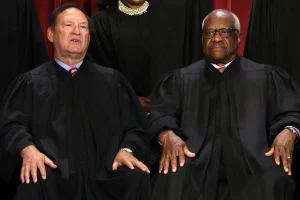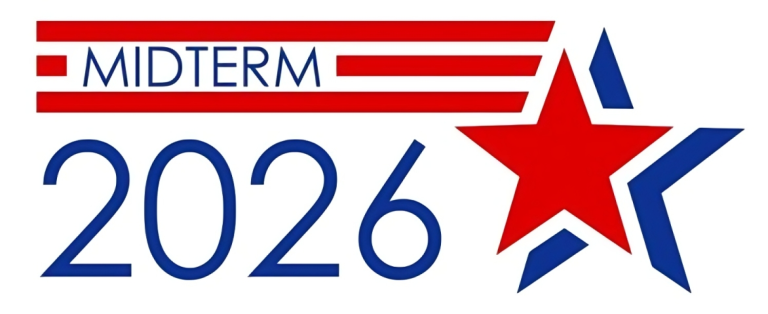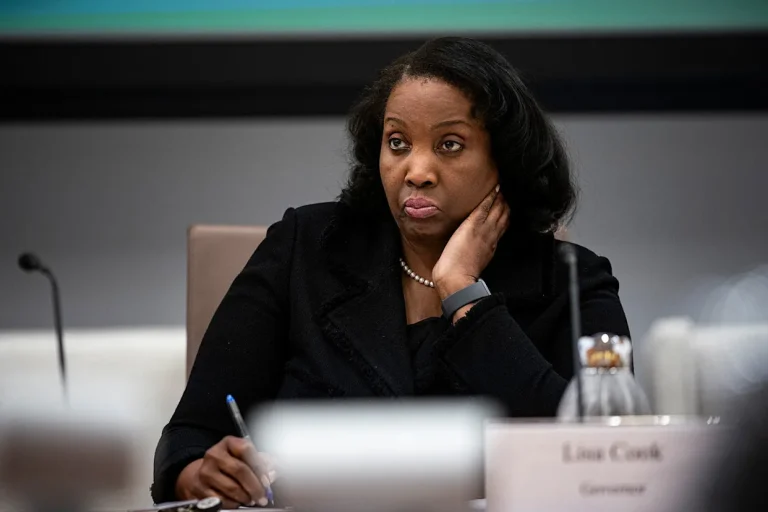The United States Supreme Court issued an emergency order late on November 21, temporarily blocking a lower court ruling concerning Texas’ congressional boundaries. The move preserves the current map while the Court reviews the case, allowing time for justices to consider the legal and constitutional questions involved.
The emergency stay was issued just hours after Texas appealed a decision from the U.S. District Court for the Western District of Texas, which had struck down the recently redrawn congressional map. Justice Samuel Alito, who handles urgent appeals from the state, granted an administrative stay, effectively halting the enforcement of the lower court’s judgment. Administrative stays are used to maintain the status quo while the Supreme Court deliberates further, ensuring that immediate changes do not disrupt ongoing electoral processes.
The case emerged as part of broader legal battles over election maps across several states, with courts and legislatures often in conflict over how districts are drawn and whether they meet federal standards. In this instance, the federal district court’s ruling had found that challengers were likely to prove at trial that the state’s new map involved improper considerations. The decision, issued by a three-judge panel on November 18, was split 2-1, reflecting deep divisions over the interpretation of federal voting laws and constitutional protections.
The majority opinion, written by U.S. District Judge Jeffrey V. Brown and joined by U.S. District Judge David C. Guaderrama, concluded that plaintiffs had presented “substantial evidence” indicating that the state had engaged in actions that could unfairly influence outcomes in favor of particular groups. The dissenting judge, U.S. Circuit Judge Jerry E. Smith, strongly disagreed with the majority’s analysis and argued that the ruling overstepped judicial authority.
The ruling and subsequent appeal come amid a politically charged environment in Texas. Republicans currently hold a narrow advantage in the state’s congressional delegation, occupying 25 of the 37 U.S. House seats, with Democrats holding the remaining 12. Congressional elections in the state are scheduled for November 3, 2026, meaning that any changes to district boundaries could influence the upcoming electoral cycle significantly.
Texas officials immediately condemned the lower court ruling, calling it “absurd and unsupported” by testimony presented during the trial. Governor Greg Abbott, a Republican, emphasized that the legislature’s efforts were intended to reflect the state’s voting population and to ensure effective representation, and that the judicial intervention improperly imposed an alternative map.
“The Legislature redrew our congressional maps to better reflect Texans’ conservative voting preferences—and for no other reason,” Abbott stated. He further criticized the court for undermining legislative authority granted by the U.S. Constitution and suggested that the Supreme Court appeal was both necessary and timely.
Texas filed the emergency appeal directly with the Supreme Court under provisions of the federal Voting Rights Act, bypassing the U.S. Court of Appeals for the Fifth Circuit. This direct appeal process is reserved for urgent cases involving election-related issues, particularly those that could affect representation or the administration of upcoming elections.
Legal experts note that the Supreme Court’s intervention highlights the continuing tension between judicial oversight and legislative authority in shaping electoral maps. While the Constitution grants states significant control over the design of congressional districts, federal courts retain the authority to review maps for compliance with voting rights protections and constitutional mandates. The balance between these powers has been a recurring theme in redistricting litigation for decades.
The federal district court’s ruling emphasized concerns about fairness and equity in the electoral process, suggesting that plaintiffs had made a credible showing that certain communities could be disadvantaged under the newly drawn lines. The court’s analysis considered factors such as the geographic distribution of voters, historical voting patterns, and the potential impact on minority representation.
Conversely, state officials argued that the redistricting process was conducted transparently and in accordance with established procedures. They maintained that the maps were designed to reflect population shifts and demographic trends, rather than to unfairly favor any particular political outcome. Abbott’s administration framed the legal challenge as an attempt to undermine the will of the state legislature, which is vested with constitutional authority over congressional districting.
The Supreme Court’s emergency stay does not resolve the underlying legal dispute but prevents immediate implementation of the district court’s order. Analysts suggest that the Court will carefully evaluate arguments from both sides before deciding whether to allow the lower court ruling to take effect, modify it, or ultimately overturn it. The justices will consider a range of legal standards, including constitutional provisions related to representation, the Voting Rights Act, and prior precedent on gerrymandering and districting practices.
Historically, cases involving redistricting and claims of unfair manipulation have been contentious. The Supreme Court has previously ruled that using race as a predominant factor in drawing districts is unconstitutional, but has allowed for maps that intentionally favor political parties, provided they do not violate federal statutes or the Constitution. The nuances of these precedents often lead to complex litigation, particularly when district lines may influence competitive elections in closely divided states.
Observers have noted that the timing of the case is politically sensitive. With midterm elections approaching, any modification of congressional boundaries could have a tangible effect on voter representation and the partisan balance of power in Congress. The emergency stay ensures that current districts remain in effect while the Supreme Court examines the merits of the appeal, preventing immediate disruption to electoral administration and providing stability for candidates and voters alike.
The legal filings from Texas argue that the lower court’s assessment relied on flawed assumptions and misinterpreted evidence. State attorneys contend that the legislature acted within its discretion, following demographic data and public input, and that the court’s ruling exceeds its authority by effectively imposing a judicially created map. The state’s appeal stresses the importance of preserving legislative autonomy in matters of district design, a principle rooted in the separation of powers doctrine.
Meanwhile, the plaintiffs maintain that their claims are grounded in concerns about equitable representation and the protection of historically underrepresented communities. They argue that any map that disproportionately diminishes the voting strength of certain groups undermines democratic principles and violates federal protections against discriminatory practices. The courts must weigh these competing considerations carefully, balancing the rights of voters against the prerogatives of state legislatures.
The Supreme Court’s role in this matter is particularly pivotal because its decision will set a precedent for how similar disputes are handled in other states. Redistricting battles are not confined to Texas; many states regularly face litigation over the fairness of congressional and legislative maps. The outcome of this case could influence national standards for evaluating claims of discrimination or improper influence in the redistricting process.
Legal analysts also point out that the emergency stay reflects the Court’s recognition of the practical implications of sudden judicial orders. Abrupt changes to district boundaries could create logistical challenges for elections, including voter registration, ballot printing, and candidate filings. By preserving the current map temporarily, the Court ensures continuity in election administration while addressing the underlying constitutional and statutory questions.
As the Supreme Court considers the emergency appeal, both sides are preparing detailed briefs outlining their legal arguments, historical context, and relevant data. The justices will likely examine prior precedent on congressional redistricting, including landmark decisions on racial and partisan gerrymandering, and may also consider the potential impact on the upcoming 2026 elections.
While the ultimate resolution could take months, the emergency stay provides immediate relief for state officials and candidates, maintaining consistency in the electoral map and preventing confusion for voters. It also signals the Supreme Court’s willingness to engage in high-stakes, time-sensitive disputes where electoral representation and the balance of power in Congress are at stake.
The case underscores the ongoing tension between state legislatures and the federal judiciary in managing the electoral process. Courts play a critical role in ensuring compliance with federal voting protections, while state officials are tasked with drawing districts that reflect population changes and preserve effective representation. The resolution of this dispute will offer insight into how these competing responsibilities are reconciled in practice.
As litigation progresses, stakeholders including lawmakers, advocacy groups, and the public will be closely monitoring developments. The Supreme Court’s decision, whether to allow the lower court ruling to proceed or to block it permanently, will have far-reaching implications not only for Texas but potentially for electoral practices nationwide.
Ultimately, the Court’s involvement in this Texas case reflects the high stakes associated with redistricting disputes. The balance between ensuring fair representation, protecting the rights of voters, and respecting legislative authority remains at the center of this legal battle. Observers will be watching closely as the Supreme Court navigates these complex issues and shapes the legal framework governing congressional districting for years to come.

Emily Johnson is a critically acclaimed essayist and novelist known for her thought-provoking works centered on feminism, women’s rights, and modern relationships. Born and raised in Portland, Oregon, Emily grew up with a deep love of books, often spending her afternoons at her local library. She went on to study literature and gender studies at UCLA, where she became deeply involved in activism and began publishing essays in campus journals. Her debut essay collection, Voices Unbound, struck a chord with readers nationwide for its fearless exploration of gender dynamics, identity, and the challenges faced by women in contemporary society. Emily later transitioned into fiction, writing novels that balance compelling storytelling with social commentary. Her protagonists are often strong, multidimensional women navigating love, ambition, and the struggles of everyday life, making her a favorite among readers who crave authentic, relatable narratives. Critics praise her ability to merge personal intimacy with universal themes. Off the page, Emily is an advocate for women in publishing, leading workshops that encourage young female writers to embrace their voices. She lives in Seattle with her partner and two rescue cats, where she continues to write, teach, and inspire a new generation of storytellers.








